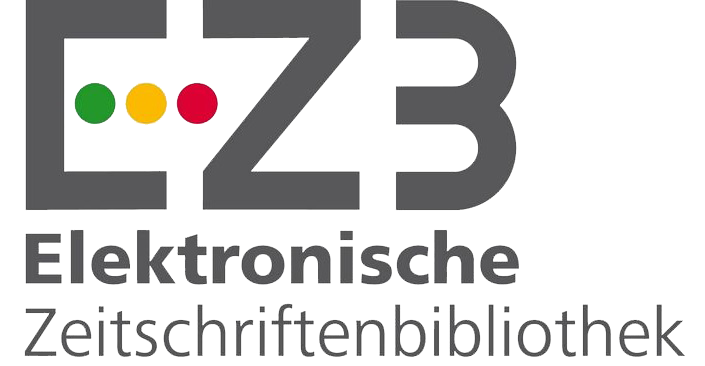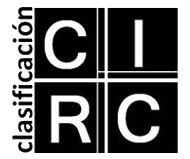Women and sexting: the body and the gaze in the new sexual exhibition practices
DOI:
https://doi.org/10.24215/16696581e061Keywords:
sexting, gender, digital media, body, gaze.Abstract
The objective of our investigation is to analyze the characteristics of an increasingly widespread practice: the sexual exhibition of the body in digital media. Known in media as sexting, this activity consists of taking one´s photos or filming in erotic situations and sharing them with other people through a smartphone. The problem of gender goes through this trend in multiple ways; we will focus our attention on the gazes that are placed on the female figure and how the body should be shown. We conducted a series of in-depth interviews with women of different ages who consider themselves to be sexting practitioners in order to know how this practice is performed, what characteristics it has, what women feel when doing it, what their expectations, fears and goals are. We will describe two features that particularly impacted us: the place that one's gaze and that of others occupies in sexting and how the female body is portrayed in these images. We will present a series of vignettes taken from the interviews to reflect on what is said there; for this, we will work with authors coming from the philosophy, the psychoanalysis and the sociology.Downloads
References
Anastassiou, A. (2017). Sexting and Young People: A Review of the Qualitative Literature. The Qualitative Report, 22(8), pp. 2231-2239. Recuperado de http://nsuworks.nova.edu/tqr/vol22/iss8/9.
Berger, J. (8 de enero de 1972). Ways of seeing (capítulo II). [Programa televisivo]. BBC, Reino Unido. Recuperado de https://www.youtube.com/watch?v=X_lNBC_ijIQ
Chalfen, R. et al. (2011). It’s only a picture’: sexting, ‘smutty’ snapshots and felony charges. Visual Studies, 24(3). International Visual Sociology Association, New York.
Colenbrander, A. A. (2016). Always a step ahead: The process of handling escalated sexting: An explanatory study of intervention and prevention actors and measures handling escalated sexting. (Tesis de maestría). Universidad de Twente, Enschede, Países Bajos. Recuperado de http://essay.utwente.nl/69672/
Costa, J. (10 de julio de 2010). Sexting, el fenómeno de los adolescentes que se exhiben online, La Nación. Recuperado de https://www.lanacion.com.ar/1283419-sexting-el-fenomeno-de-los-adolescentes-que-se-exhiben-online
Courbin, A.; Courtine, J. J. y Vigarello, G. (2006). Historia del cuerpo. Volumen III: Las mutaciones de la mirada, el siglo XX. Madrid: Editorial Taurus.
De Baecque, A. (2006). Pantallas. El cuerpo en el cine. En Courbin, A.; Courtine, J. J. y Vigarello, G. (2006). Historia del cuerpo. Volumen III: Las mutaciones de la mirada, el siglo XX. Madrid: Editorial Taurus.
Drouin, M. et al. (2015). Sexting: A new, digital vehicle for intimate partner aggression? Computers in Human Behavior, 50, pp. 197-204.
Finol, J. E. (1 al 3 de noviembre de 2001). Estética del Cuerpo: Esbozo de un Análisis Semio-Antropológico. Conferencia inaugural, 8va Jornada de Odontología: Arte y Ciencia: Buscando la belleza. Universidad del Zulia, Facultad de Odontología, Maracaibo.
Lacan, J. (2013). Seminario XI: Los cuatro conceptos fundamentales del psicoanálisis (1964-65). Buenos Aires: Paidós.
Laplanche, J. (2006). Diccionario de Psicoanálisis. Buenos Aires: Paidós.
Le, L. (2016). What’s your ‘sext’ drive? Examining female emerging adults’ experiences of sharing visual sexual content through communication technologies. (Tesis de maestría). Universidad de Alberta, Alberta, Canada. Recuperado de https://era.library.ualberta.ca/files/
czp38wc63s/Le_Lily_201602_MEd.pdf
Melman, C. (2002). L´Homme sans gravité. Entretiens avec JP Lebrune (traducción propia). París: Éditions Denoël.
Ons, S. (2012). Comunismo sexual. Buenos Aires: Paidós.
Ringrose, J. et al. (2012). A qualitative study of children, young people and 'sexting': a report prepared for the NSPCC (traducción propia). National Society for the Prevention of Cruelty to Children, London, UK. Recuperado de www.nspcc.org.uk.
The National Campaign to Prevent Teen and Unplanned Pregnancy (2008). Sex and Tech: Results from a Survey of Teens and Young Adults. Washington, DC: Author.
Wajcman, G. (2011). El ojo absoluto. Buenos Aires: Manantial.
Ynoub De Samaja, R. (2007). El proyecto y la metodología de la investigación. Buenos Aires: Cengage Learning.
Downloads
Additional Files
Published
How to Cite
Issue
Section
License
La aceptación de un original por parte de la revista implica la cesión no exclusiva de los derechos patrimoniales de los/as autores/as en favor del editor, quien permite la reutilización, luego de su edición (postprint), bajo una Licencia Creative Commons Atribución-NoComercial-CompartirIgual 4.0 Internacional (CC BY-NC-SA 4.0)
Acorde a estos términos, el material se puede compartir (copiar y redistribuir en cualquier medio o formato) y adaptar (remezclar, transformar y crear a partir del material otra obra), siempre que a) se cite la autoría y la fuente original de su publicación (revista y URL de la obra), b) no se use para fines comerciales y c) se mantengan los mismos términos de la licencia.
La cesión de derechos no exclusivos implica que luego de su edición (postprint) en Question las/os autoras/es pueden publicar su trabajo en cualquier idioma, medio y formato; en tales casos, se solicita que se consigne que el material fue publicado originalmente en esta revista.
Tal cesión supone, también, la autorización de los/as autores/as para que el trabajo sea cosechado por SEDICI, el repositorio institucional de la Universidad Nacional de La Plata, y sea difundido en las bases de datos que el equipo editorial considere adecuadas para incrementar la visibilidad de la publicación y de sus autores/as.
Asimismo, la revista incentiva a las/os autoras/es para que luego de su publicación en Question depositen sus producciones en otros repositorios institucionales y temáticos, bajo el principio de que ofrecer a la sociedad la producción científica y académica sin restricciones contribuye a un mayor intercambio del conocimiento global.















































